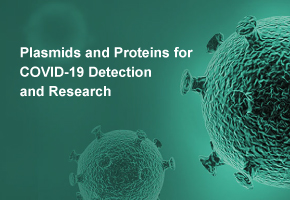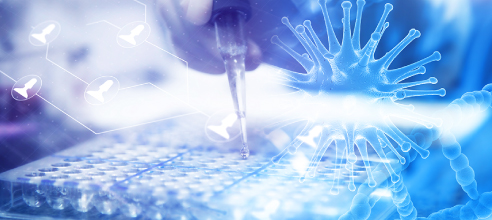How do Weathering Test Machines Enhance UV Resistance?
The automotive industry is continually evolving with a high focus on safety, appearance, and durability. One of the major challenges for producers is to ensure that parts of vehicles, particularly plastic exterior and interior components, remain durable with long-term exposure to sunlight and environmental factors. Weathering test machines, one of the many environmental stability chambers, are important where these come into play.
Plastic compounds employed in dashboards, bumpers, trim panels, and headlamp coverings need to maintain their physical appearance and material integrity over the years, even at constant UV attacks, temperature changes, and wet conditions. It is possible, through controlled testing rooms, to mimic all these environmental scenarios and ensure material durability before one introduces a product into the marketplace.
The Role of UV in Material Degradation
Ultraviolet (UV) radiation is also a major cause of plastic degradation in vehicles. When UV light is applied to most polymers, photochemical reactions occur that result in
Fading and discoloration
Loss of sheen
Surface cracking
Lower impact strength
Brittleness
These effects not only damage the visual appearance of the vehicle but also reduce the mechanical integrity of the material. Thus, the improvement of UV resistance is not merely a cosmetic requirement—it's a matter of long-term durability and customer satisfaction.
What Is a Weathering Test Machine?
A weathering test machine is a dedicated, laboratory equipment-based device used to mimic outdoor weather in an accelerated pattern. It will subject test pieces to sequences of UV, hot air, and moisture (simulated rain or dew), often with the application of corrosives. By summarizing years outdoors into weeks or months, industries can obtain important indications of material long-term performance.
These devices typically utilize either xenon arc lamps or UV fluorescent lamps to simulate sunlight. Xenon arc systems, specifically, provide full-spectrum light that most closely simulates natural sunlight and are therefore well-suited for automotive plastic testing.
Key Features of Modern Weathering Test Machines
UV Simulation: Simulates sunlight with controlled UV-A and UV-B radiation.
Temperature Control: Controls the interior chamber temperature to simulate heat.
Humidity and Water Spray: Introduces moisture cycles to simulate rain and dew.
Cycle Customization: Provides day/night and dry/wet cycle simulation.
Specimen Holders: Engineered to test multiple types of materials in a single run.
These capabilities enable research and quality engineers to simulate the extreme conditions one would find, for example, in desert climates or tropical applications—conditions those automotive components might experience in normal use.
Environmental Stability Chamber: Complementing UV Testing
An environmental stability chamber provides a more comprehensive solution. Environmental stability chambers mimic a variety of environmental parameters, such as:
Temperature changes
Humidity control
Long-term thermal aging
Thermal shock
In the case of automobile plastics, environmental stability chambers are especially beneficial for material testing under cyclic heat stress or humidity swelling and contraction. They supplement weathering testing by assessing the performance of these materials in conjunction with UV light exposure.
Application in Automotive R&D and QA
Weathering and stability testing are used by automotive suppliers and manufacturers during the product development process. Some of the frequent uses are:
Material Selection: Selecting UV-stable polymers for new car models.
Coating Validation: Validating protective coatings on plastic components for effectiveness.
Supplier Comparison: Comparing materials provided by various vendors.
Regulatory Compliance: Ensuring conformity to international standards such as ISO 4892, ASTM G155, and SAE J2527.
Failure Analysis: Root cause determination of field failures due to discoloration or cracking.
By performing these tests at the early stages of product development, businesses can prevent expensive recalls, minimize warranty claims, and uphold a good brand image.
Real-World Case Studies
A leading automotive OEM had frequent customer complaints regarding the discoloration of dashboards in high-temperature locations such as the Middle East. Using a xenon arc weathering test machine and a highly precise environmental stability chamber, the QA team concluded that the then-current polymer formula did not contain adequate UV inhibitors.
With this information, the R&D group re-grounded the plastic with stabilizers that greatly enhanced resistance. The redesigned dashboard weathered more than 1,000 hours of accelerated testing without major color change, resulting in fewer field problems and increased customer satisfaction.
Conclusion
In the constantly demanding automotive industry, maintaining the durability and look of plastic parts is no longer a choice—it's a requirement. Sophisticated testing tools such as weathering test machines enable manufacturers to provide products that not only look fantastic on day one but also maintain their integrity for years to come.
For businesses that require dependable, high-performance testing instruments, Presto Enviro is the trusted partner. From its strong lineup of weathering test machines and environmental chambers with automotive applications, Presto makes certain your materials meet the industry's most demanding standards—before they even reach the factory floor.
- Like
- Reply
-
Share
About Us · User Accounts and Benefits · Privacy Policy · Management Center · FAQs
© 2025 MolecularCloud




